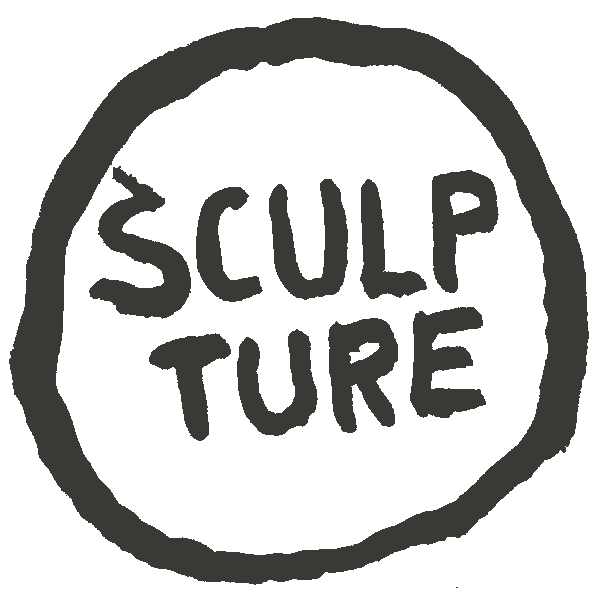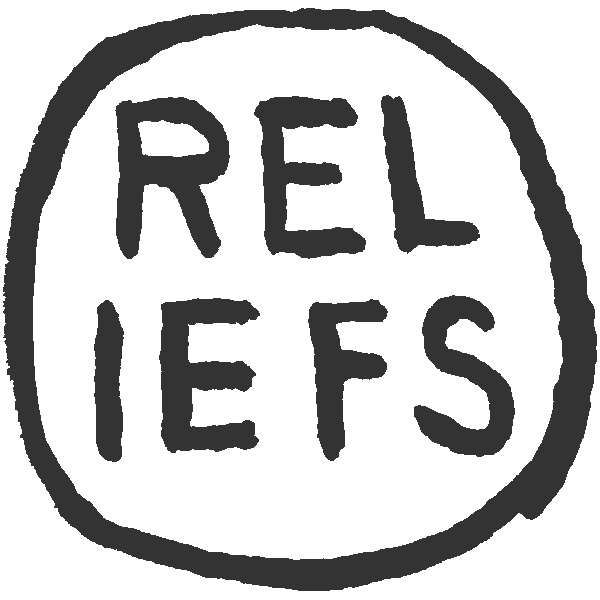Catalogue Essay | by Geoffrey Young
"The laws of conscience,
which we say are born of nature,
are born of custom." -- Montaigne
“What will happen when the buffalo are all slaughtered?...
What will happen when the secret corners of the forest are heavy
with the scent of many men and the view of the ripe hills is blotted
by talking wires?...The end of living and the beginning of survival.”
-- Chief Seattle to U.S. President, 1852
If polar icecaps melted and rain fell endlessly and we suddenly needed an Ark stocked for the next millennium, I'd know who to call. In charge of lining up bird, beast, wildflower, tree & other phenomena of the natural world would be Morgan Bulkeley, in whose view of the creation no critter goes unvalued. The son of a naturalist, and himself a lifelong devotee of bird and free-range beast, Bulkeley has a well-developed sense of the fragile balance in which nature and man co-exist. In his world, rattlesnake, weasel, spoonbill and butterfly would file in next to thistle, fern, grass, and wildflower (among all things great and small) in one generously fluid category labeled: "All Equally Beautiful and Necessary." Humans, too, would be included, but it is not clear if our species would be allowed above steerage.
Because, alas, in every Eden there's a principle of otherness, and that otherness goes by the names of Satan, Greed, or "The Wrecking Crew,"-- those unenlightened, if hard-wired aspects of our general humanity. Bulkeley's paintings address the conflict head-on, dramatizing the sometimes hilarious, often times dire clash of human culture with what is familiarly called Nature. On the plains and rolling hills of his paintings, large forces are brought before the viewer in all their turmoil and strife. Though a character add a beak to his face, and crude wings to his shoulders, that man can only aspire to fly.
Morgan Bulkeley's pictures are plausible fictions, fantasies in condensed form linking his great, robust feeling for the environment to the vagaries of his own personal life. With palette knife and brush on canvas, or carving and painting wood panels in low-relief, he represents a dynamic world of disparate things flooding our sensorium with their overlapping energies. In each of the maple panel works, however coyly embedded, as if dreaming the action, or equal to it, is the image of a head, with two eyes, and a tooth-filled mouth--stand-ins for the "omniscient" consciousness of the artist.
It would be fascinating to hear Bulkeley "confess" the personal story-line encoded in this decade-long series, a series whose rigorous format showcases the artist's inventive stamina and indefatigable imagination. One formal constraint used in this series was to include, over time, an example of each of the forty-three kinds of warblers that pass through Western Massachusetts. Once accomplished, the series kept going -- new birds added, the warblers recycled -- by the useful force of its own improvisational, diaristic urges.
Bulkeley's use of autobiographical material (suitably transformed to take on general cultural resonance), allows him to incorporate important events in his life, symbolically, in something like the way Mondrian's love of tango led to "Broadway Boogie-Woogie," since art must have an experiential relationship to its maker.
You can't improve on a warbler, his work seems to say. Or a skunk, wild turkey, or fox. (Nor can you improve on the beauty of oil paint on canvas to summarize a complex vision.) Bulkeley's bright palette celebrates the role of light falling on every thing, including human foible, and of our sometimes capacity to see. His paintings are like an allegorical reminder to wake up and sneeze the pollen, to value what direct perception is ours.
To be nourished by the colorful immediacy of the ever-unfolding creation, we must check our human arrogance at the door. It's not just a benign tolerance he's invoking, but a poet's praise of species diversity. Which is not to eliminate Mickey Mouse at all -- that oft-painted icon belongs to the species known as "pop-culture" -- but to know him for what it is.
Though by necessity a witness, mankind is frequently just an annoying extra on the set, sure to mess things up. More and more detritus from consumer culture takes its ingratiating place in the artist's sylvan settings, reminders of human agency. In Bulkeley's world, the celebration of nature's bounty is contingent upon the containment of those forces which would disrupt or exploit its eloquent variety.
What he reveals and what he conceals in his pictures (their harms and charms), provides a critically evolving engagement with what is happening to our environment.
Taking landscape as central (sky above, ground below), Bulkeley's purpose is always and initially: make a compelling work. By painting what he knows and cares about (a naturalist's feeling for wild nature), his pictures make claims for free-spirited abundance and beauty. But then a plane flies into the side of a building, or a cheap mass produced model of the Statue of Liberty is found sitting in a meadow. Warring energies are thus unleashed in his paradise of crisply painted plants and animals. Never static, tensions between Civilization and Nature ooze and flow from one painting to the next. Sometimes Nature gains the upper hand (a crocodile swallows a human), sometimes a box of cornflakes commands center stage. The vigilance is all.
There is something droll & accurate about the way a bird approaches the brightly printed packaging of a candy bar in A Moment. "Culture clash" may be too strong a phrase, but the juxtaposition has aesthetic purpose. Eden, today, is more like a managed land trust, protected and respected by concerned citizens. We can aspire to live there, but only as long as we are conscious of the consequences of our presence.
Bulkeley's paintings raise the issue of our responsibility; the challenge of his work should affect the choices we make. To his great credit, he gets his point across with sly humor, bold composition, a veteran's touch and masterful color.
Blissfully free of any allusion to current obsessions with get-rich-quick technology, these works of art belong to a tradition of easel painting that goes back to the Renaissance, and to a tradition of imagery that goes back to Pompeian frescoes, if not the transmigrational magic of animal paintings on Egyptian tomb walls.
But the calculated visual disruption produced by Bulkeley's consumerist icons points to an increasingly challenged natural world as it is inundated with the ubiquitous evidence of logo-trash, even in places you might least expect to find it. His roster of up-to-the-minute refuse, which dots the landscapes like perverse intruders, includes Campbell's soup cans, Band Aids and their boxes, Butterfingers, Mickey Mouse, Budweiser, cigarette packages, packs of Wrigley's gum, sticks of deodorant & other instantly identifiable household goods, usually linked in the pictorial space to some nearby bird or animal as pun. The Bald Eagle, for example, in E.Z. Bird I.D. p.2, is inspecting a bottle of Rogaine. These consumer icons encourage us to think of the paintings in their contemporary immediacy, in the same way that Eric Fischl’s paintings include TVs, walkmans, and contemporary art prints in order to be of our time.
Bulkeley's works gather and identify a conflict; they entertain with persistent humor and remind us of consequences. Is the wild bear about to crush the Statue of Liberty with one swipe of its paw? Is the beaver chewing through a yellow pencil doing no more than the bidding of a misanthropic Luddite? Is there a moral to this aesthetic tale? Reap what you sow, practice what you preach? Is this painter upset with man's cavalier attitude toward the environment, or only toying with representation? Does he chew Juicy Fruit gum? Or does he just love to paint its bright packaging? Are these maple panels, intensely crammed with vectoring birds, pencils, gum, sheets of newsprint, foliage, trees, and animals more about abstraction than symbolic narrative? Are they about all the competing energies that hover within our post-modern minds? How can we see straight, do right? And, according to whose vision, whose interests?
Behind these paintings is a conscience in which the politics of land management, the preservation of threatened species & the importance of direct physical experience of nature are all critically important values. For if it is true that Capital's voracious entrepreneurship is gobbling up open land's unspoiled wonder at a frightening clip (50 acres a day in greater Atlanta alone), then who will protect the rights of species who from "time immemorial" (is this another fiction?) have inhabited those sites? But to rant would be wrong, and might reduce his paintings to no more than visual essays of social outrage, which they are not.
Because, first and foremost, Morgan Bulkeley is an artist, which is to say, his job is to make art of what he knows and feels, transforming any experience to his imaginative purpose. If grown men masquerade as birds, if couples locked in passionate embrace unravel, if birds see through the eyes of men and vice versa, so be it. His work accepts the complexities, indeed, it composes with them. It's not just a Darwinian jousting for turf. What radiates from Bulkeley's Peekable Kingdom, besides his wry disgust, is the signature skill with which he handles the formal elements of light, form, and perspective. His full spectrum summer hills wave as they recede, the stylized leafiness of his trees stand like sentinels overlooking the collisions.
In I'm Flying…Aren't I?, a birchbark car has just crashed into a birchbark sofa out in a field, and the force of the impact has sent the driver flying through the air, or so it seems. If it takes a collision to generate the question of the painting's title, is this wit, or satire? Pride, or humility? The best a man can do? But can't we dream? In the right foreground, birds are arranged in different degrees of attention around a can of Campbell's Cream of Chicken soup. If you remember the phrase, "a chicken ain't nothing but a bird," you see the situation as an anxious moment. What bird wouldn't be concerned? Campbell's Chunky Spoonbill. . .but for a simple twist of fate?
And in the background, like a joke sculpture or horrible tragedy -- or the distant memory of Wind in the Willows -- a birch plane has crashed into a birch building. This painting seems to be saying, give it up, boys. Flight is given to birds, not humans. What's natural is a fact. Keep your feet on the ground. Live with it.
Morgan Bulkeley comes to his good sense from long familiarity and appreciation of nature's multifarious and overlapping dramas of expression, hunger and survival. He combines his sympathetic knowledge of bird and landscape with a shaman's sense of artistic creation, producing unique "go the stippled extra mile" works in which no detail is too insignificant to dwell on, as there is no moment like the present to hush the mind and let a painting tell you its hidden story.
An increased energy and freedom in the handling of paint characterize the large paintings in which interstitial passages are no less meaningful than the figures and their allegories. Skies, crowded with airy cloud chunks and knife-twists of color, are tour de force canopies above the drama of interspecies wariness and anxiety below.
If Bulkeley were to paint today's Sistine Chapel, a warbler would sit on the throne of god. Humans would be relegated to small decorative panels, far from the central drama, as if by getting too close we might upset the natural rhythms of the creation. Does this make him a misanthrope? Nope.
Activist? Yes.
Dystopian? Sometimes.
Doctrinaire? Jamais.
Entertaining? Always.
Once the politics of the paintings is teased out, the true fun begins. Only then do we consider this apparently fictional world for the strange invention that it is, even as it mirrors our own: light-grazed hills, leaf-thickened trees, spaces alive with man, bird and beast, in fretful and amazing confabulation. Upon closer inspection, the playful intelligence of his protagonists (a spoonbill's curiosity, a wildcat's feral claw), is situated in the context of a brilliantly organized world of material things, whose witty juxtapositioning is guaranteed to generate a frisson in the viewers.
Imagine Rip van Winkle waking in Sleepy Hollow, 1999, to find a birch-clad airplane crashed into the side of a birch-clad house. Rip rubs his eyes again. Incomprehensible. He falls back to sleep for a hundred years. What these paintings will tell of our time, 100 years from now, none of us will be around to know. Planes? Cars? Dancing band-aids? Dirigibles that seem to double as survival arks? The perennial problem of balancing human freedom with human responsibility?
As Monet painted red poppies in a field, and Morandi painted bottles, Bulkeley is painting skies filled with darting warblers. It is a pleasure now, as we move into high millennial gear, to be part of Bulkeley's imaginative response to this fin de siècle.





